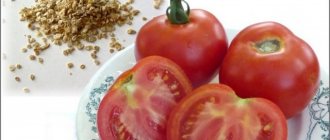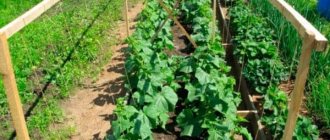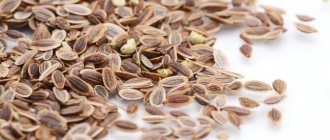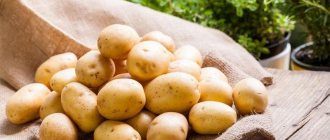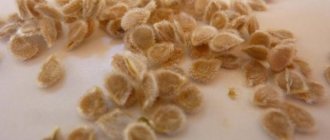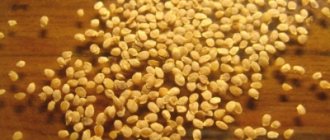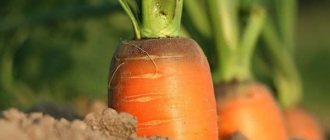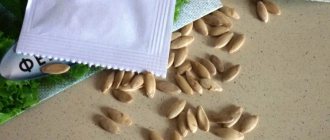When preparing seeds for sowing, gardeners use various methods, from disinfection to hardening, but this is not always necessary. Which seeds require preparation, and which need to be sown without preliminary manipulation?
Seeds of tomato varieties that you have collected from your own plants, or also received from neighbors, friends, or from gardeners who sell seeds of amateur varieties, must be checked and processed before sowing.
Seeds are of different quality, unfulfilled, unripe, if they were collected from unripe fruits. Fully ripened seeds have a high germination rate. Harvested seeds could be stored in unsuitable conditions; sometimes they carry infection on the shell or inside the seed, causing pathogens of various diseases. You can prevent losses and get good seedlings if you pre-sort the seeds, check germination, carry out disinfection and, if necessary, stimulate germination.
Do not carry out all the proposed operations at once, do only the necessary minimum. Even the most viable seeds will not withstand all pre-sowing procedures, and this is not necessary; high-quality seeds will sprout without any tricks. One disinfection or growth stimulation is enough.
Sorted by density and size
You can select the best seeds by appearance; they will be the largest, well-made, without visible defects. It is easy to sort empty seeds in a 3-5% saline solution. Dissolve 30-50 g of table salt in 1 liter of water, immerse the seeds in the solution, stir and let stand for a few minutes. Drain the floating seeds along with the water; they are unsuitable for sowing. Rinse the seeds remaining at the bottom with clean water and dry.
At the same time, separate the seeds into fractions if they differ in size. The largest seeds will give more vigorous shoots. Small seeds may be quite viable, but will be slightly behind in development; it is better to sow them separately.
Determination of seed germination
The germination of tomato seeds lasts for 4-5 years. If you are not sure that the seeds are fresh, then it is worth checking their germination. Take a dozen seeds for testing and place them in a damp cloth for germination. It is best to germinate in a closed container so that the water does not evaporate. According to the rules, germination energy is first determined - the ability of seeds to produce vigorous shoots.
For tomatoes, this indicator is calculated on the 6th day. On the 10th day, germination is determined - the ability of seeds to form full-fledged seedlings. If most of the seeds have sprouted, the entire batch can be used. Of course, germination in the soil will be somewhat less, but in any case you will understand whether the seeds are suitable for sowing.
When should the procedure be performed?
All work on seed preparation must be carried out 1.5-2 months before planting. If the timing of planting tomatoes is determined by the lunar calendar, then you need to calculate the time for the preparatory work. It is best to sow tomatoes when the Moon is in the sign of Taurus, Pisces, Scorpio.
A good harvest is obtained when the night luminary is in the constellation Capricorn. The optimal time for planting tomatoes will be the beginning - mid-March. And the preparation of the soil and containers is carried out 2-3 weeks in advance, disinfecting. After this, the soil is given the opportunity to become saturated with beneficial microorganisms.
Seed disinfection
It is advisable to disinfect your own seeds and seeds obtained from other sources that are of suspicious quality. Many plant diseases are transmitted through seeds; disinfection will help reduce infestation and increase plant resistance to disease.
The simplest and most effective way of dry disinfection is to warm the seeds in sunlight for 2-3 days, but in late winter conditions in the middle zone this is difficult. Wet disinfection methods involve soaking tomato seeds in various solutions. Use only one type of treatment for diseases.
The most popular among gardeners is potassium permanganate, or potassium permanganate. This drug acts on a wide range of pathogens, but only works on the surface of the seeds. If the infection is contained within the seed, as happens with viral diseases, then potassium permanganate will not be effective. The tomato is treated with a 1% solution for 30 minutes. Measuring 1 g of crystals at home is not easy, but there is a convenient way. It is believed that 1 teaspoon (5 ml) without top contains 6 g of potassium permanganate. Pour the crystals into a spoon, remove excess with the flat side of a knife, dissolve in 600 ml of water. Immerse the seeds in the solution so that they do not stick together and are moistened on all sides. After 30 minutes, rinse the seeds with clean water and dry.
Hydrogen peroxide is available in every home medicine cabinet; a 2-3% solution is also suitable for disinfecting seeds. Heat the solution to a temperature of 38-45°C and immerse the seeds in it for 5-8 minutes, rinse with clean water and dry.
Mustard is used to disinfect seeds in various ways. Immerse the seeds in a 1.5% solution of mustard powder for 6 hours, then rinse thoroughly and spread in a thin layer to dry.
Grind 10 g of powder in 20 ml of warm water, place the pulp in a 2-3 liter container. Place the tomato seeds in a gauze bag and hang them over a layer of mustard at a height of 10-15 cm. Close the container tightly with a lid and leave the seeds over the mustard steam for 30 minutes, and then spread them out in a thin layer for ventilation for 2-3 hours.
Biologically active aloe juice helps resist bacterial diseases and is a good natural stimulant. First, pick the aloe leaves and put them in the refrigerator for 5-7 days, then squeeze out the juice and dilute it with water (1:1). Immerse tomato seeds in the solution for 1 day and then dry.
Heat treatment can eliminate a viral infection if you suspect one. At home, it is not always possible to accurately maintain the temperature, so resort to this method as a last resort. The following procedures are recommended for tomato seeds. First, the seeds are kept for 24 to 38 hours at a temperature of 30-40°C, then 48 hours at 50-55°C, and 24 hours at 78-80°C.
The nuances of soaking seed material in "Epin"
The effect of Epin Extra on seed material is compared with the effect of ginseng on the human body. To get the desired result from the tomato harvest, you need to properly treat the seeds before planting.
Methods
A representative of brassinosteroid hormones is produced in ampoules of 1 and 5 milliliters. When using the drug for tomato seeds, the resources contained in the planting material are strengthened. Thanks to this, seedlings appear faster. They develop fully, turning into plants capable of producing high yields.
The product encourages seeds to grow when soaked. And irrigating the soil with Epin solution can have a stimulating effect on the material after planting.
Dosage and preparation of solution
For tomato grains, the dosage of Epin is as follows: 4 drops of the drug per 100 ml of water. Prepare the solution using boiled water, cooled to 35 degrees. Do not use metal utensils to prepare the solution. The healing properties of “Epin” are lost in the light, in an alkaline environment. Be sure to dilute so that the solution has a minimum concentration. How long to keep tomato seeds in Epin depends on the degree of dryness.
Bubbling seeds
Bubbling is the saturation of seeds with oxygen or air in water; this operation activates the work of enzymes in the seeds, while changes occur in the composition of reserve substances and germination increases. In addition, harmful microorganisms are washed off from the surface of the seeds. For bubbling you will need a container of water, a funnel with a fine sieve and an aquarium compressor. Connect the funnel to the compressor hose, pour the seeds into it, place it in water at a temperature of 20°C, not reaching the edges, but so that the seeds are in the water. You can simply put the seeds in a gauze bag and immerse them in water. Connect the compressor and blow air through the hose. It is recommended to process tomato seeds for 12-16 hours. Monitor the condition of the seeds; if they begin to hatch earlier, stop processing. After bubbling, dry the seeds; they can be stored for some time before sowing.
Hardening of seeds
It is recommended to harden heat-loving crops so that they can better adapt to unfavorable growing conditions; this technique is usually recommended for cucumber, zucchini, pumpkin, eggplant, and pepper. You can also harden tomato seeds, although modern varieties and hybrids withstand stressful conditions well. Place the seeds in a damp cloth or immerse in water until they swell. Then maintain an alternating regime for 7-10 days: keep in the snow or in the refrigerator at a temperature of 0 to 5°C for 18 hours and at 15-18°C for 6 hours. Then the hardened seeds can be kept in a dry room at a temperature of 8-10°C or sown immediately.
Enrichment of seeds with fertilizers
Solutions of mineral and organic fertilizers, in addition to enriching them with nutrients, increase plant resistance to disease. Make a solution of 10 g of superphosphate, 10 g of potassium nitrate and 0.2 g of manganese sulfate per 1 liter of water and soak the seeds for 12 hours and then dry.
It is useful to treat the seeds in a solution of humic fertilizers, this stimulates germination. Dilute 50 ml of liquid fertilizer in 1 liter of water and soak the seeds for 24 hours before sowing. You can use ready-made mixtures of microfertilizers for pre-sowing treatment of seeds or take an infusion of wood ash. Dilute ash (20 g) in 1 liter of water, leave for 1-2 days, strain and place tomato seeds in the infusion for 4-6 hours.
Treatment with bioactive substances
Seed material can be awakened to life using special ready-made means. The preparations contain components that accelerate the germination of tomatoes.
"Fitosporin"
A microbiological preparation containing beneficial bacteria not only increases the immunity of vegetable plant embryos, but also accelerates the germination of seedlings. The immunoactive factors produced by Bacillus subtilis save tomatoes from damage and awaken them.
Seeds placed in a linen bag are immersed in a bioactive solution for 10-12 hours. Prepare the liquid by adding 3-4 drops of concentrate to half a glass of warm water. It is necessary that the water temperature is 35 degrees. The solution must stand for 2 hours before treatment to activate the subtilis bacillus.
See also
How can you test tomato seeds for germination, rules for determining
Read
"Baikal EM"
The product is based on lactic acid bacteria, which promote the lush growth of tomatoes. Dilute 5 drops of liquid product in a glass of water. It is better to hold the planting material for 1-2 hours. After this treatment, even overdried seeds will sprout.
"Zircon"
The product is used to regulate the growth of seedlings and improve the quality of fruits. Soaking the seed material in a biostimulant will lead to accelerated germination. Add 1-2 drops of Zircon into a container with 300 milliliters of water. Seeds are kept for 8 to 16 hours. Do not forget that the substances inside the prepared solution must be activated. To do this, they need warm water and time of 1-2 hours.
Which seeds do not need to be processed?
Large breeding and seed companies carefully control the quality of their seeds, including their disinfection. Usually the seeds are treated dry, mixing them with fungicide powder. Seeds treated with pesticides are covered with bright paint, atypical for this plant - orange, turquoise, green, red. The packages must indicate that the seeds have been processed. Such seeds are called encrusted. A special film protects seeds from diseases, mechanical damage, and stressful conditions.
The seeds are completely ready for sowing; they cannot be subjected to additional influences. Sow them only when they are dry, but in moist soil and then water regularly. Plasma seeds can be found on sale; they are processed on special equipment under conditions of a high-frequency plasma discharge under reduced pressure. The method increases seed germination, and seedlings become disease resistant. Such seeds should also not be further processed before sowing.
Pelleting of seeds is a useful procedure that involves enveloping them in a mixture of peat, adhesives and nutrients. Beneficial microorganisms, pesticides, and growth stimulants are added to the mixture. Usually small seeds (carrots, lettuce and others) are subjected to this treatment, but if you purchased coated tomato seeds, then you do not need to treat them with anything else or soak them before sowing. Sow them dry in soil abundantly moistened with water, and do not forget to water regularly until shoots appear.
Determine whether the tomato seeds need special preparation, choose a method if necessary, but do not overdo it, unnecessary processing will only do harm. High-quality seeds from a trusted manufacturer usually germinate without problems.
Why do you need to soak?
Soaking tomato seeds is an important, but not mandatory procedure. Most vegetable growers try not to ignore this stage of preparation, because with its help you can improve the quality of the seed material.
Why are seeds soaked?
- Acceleration of adaptation to new conditions and rapid rooting.
- Increasing the resistance of seedlings to blackleg, Phoma, root rot and other tomato diseases.
- Friendly and simultaneous germination of seedlings.
- Increased yield - as the practice of many vegetable growers shows, pre-sowing soaking of seeds can increase fruiting by 50-65%.
- Preparation of expired, valuable or rare planting material. It is also advisable to soak seeds whose origin has not been clearly established.
During the soaking process, the dense outer shell of the seed, which inhibits its germination, softens and it germinates much faster than without treatment. Therefore, each gardener decides for himself whether this agrotechnical measure is necessary.
It should be borne in mind that ignoring this stage of seed preparation will lead to slow development of seedlings and a decrease in immune defense. As a result, tomato bushes will be much more likely to be susceptible to various fungal diseases and insect attacks.

